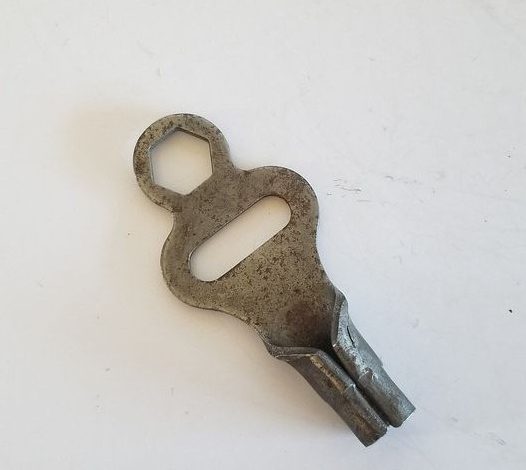
ADVERTISEMENT
The Allure of Antique Tools: Functionality, History, and Collectibility
Antique tools hold a unique place in the hearts of collectors, historians, and craftsmen alike. These tools are more than just instruments for work; they are artifacts that tell the story of human ingenuity, craftsmanship, and the evolution of industry. Among the many categories of collectibles, antique tools are cherished not only for their functionality but also for the history they carry and the stories they tell.
What Defines an Antique Tool?
An antique tool is generally defined as any tool that is over 100 years old, though the term can be applied more loosely to tools that are simply outdated or no longer in production. These tools often reflect the materials, technology, and craftsmanship of their time, offering a glimpse into the working lives of people from previous centuries.
Antique tools can range from simple hand tools like hammers, wrenches, and saws to more specialized items like stonemason’s chisels, blacksmith’s tongs, and woodworking planes. Some antique tools were made by hand, while others were produced in the early days of industrial manufacturing. Many of these tools are characterized by their durability, having been made to last for generations.
Types of Antique Tools
- Hand Tools: Hand tools are among the most commonly collected antique tools. These include items like screwdrivers, pliers, hammers, and wrenches. Often, these tools were crafted with wooden handles and forged steel, and many were custom-made or personalized by their owners.
- Specialized Tools: Many antique tools were designed for specific trades or tasks. Examples include blacksmith tools, leatherworking tools, and woodworking planes. These tools are often highly specialized and may not have modern equivalents, making them fascinating for both collectors and historians.
- Machinery Keys: Antique keys for machinery or appliances, such as stove keys, radiator keys, or valve keys, are also highly collectible. These keys were essential for operating early heating systems, stoves, or other mechanical devices, and they often feature unique designs tailored to specific models.
- Measuring Tools: Antique measuring tools, such as calipers, rulers, and squares, are prized for their precision and craftsmanship. These tools were often made with intricate engravings and fine materials, reflecting the importance of accuracy in early trade work.
- Agricultural Tools: Antique agricultural tools, such as scythes, sickles, and plows, offer insight into the farming practices of the past. These tools were essential for early agriculture and are often valued for their rustic charm and historical significance.
The History and Evolution of Antique Tools
The history of antique tools is intertwined with the history of human labor and industry. Early tools were made from stone, bone, and wood, evolving over millennia as humans learned to work with metals like copper, bronze, and iron. The advent of the Industrial Revolution in the 18th century marked a significant turning point, as tools began to be mass-produced in factories, leading to greater standardization and availability.
Throughout history, tools have been a reflection of the culture and technology of their time. For example, the development of precision tools in the 19th century was driven by the demands of the Industrial Revolution, which required accurate measurement and machining for mass production. Similarly, the creation of specialized tools for trades like blacksmithing, woodworking, and leatherworking highlights the importance of skilled labor in earlier times.
ADVERTISEMENT
As technology advanced, many tools became obsolete or were replaced by newer, more efficient designs. However, these antique tools remain valuable as historical artifacts, offering a tangible connection to the past.
Collecting Antique Tools
For collectors, antique tools are appealing for several reasons. First and foremost is the craftsmanship. Many antique tools were handmade, with a level of detail and quality that is rarely seen in modern tools. The use of fine materials, such as hardwoods and high-carbon steel, ensures that many of these tools are still functional today, even after decades or centuries of use.
Another appeal is the historical value. Each antique tool tells a story—about the person who made it, the person who used it, and the era in which it was created. Collectors often seek out tools with unique features, markings, or provenance that provide insight into their history.
Antique tools can also be a good investment. While not every tool is valuable, certain rare or unique items can fetch high prices at auction. Factors that influence value include the tool’s condition, rarity, age, and historical significance. Tools associated with famous makers or brands, such as Stanley planes or Disston saws, are particularly sought after by collectors.
Preserving and Restoring Antique Tools
Preserving and restoring antique tools requires care and expertise. While some collectors prefer to keep tools in their original condition, others may choose to restore them to working order. Restoration can involve cleaning, removing rust, sharpening blades, and replacing missing parts. It’s important to approach restoration with caution, as over-restoring can diminish a tool’s value by erasing its history.
ADVERTISEMENT
Proper storage is also crucial for preserving antique tools. Tools should be kept in a dry, climate-controlled environment to prevent rust and deterioration. Displaying tools in a way that protects them from dust and handling while showcasing their beauty can also enhance their value as collectible items.
The Continued Relevance of Antique Tools
Despite the advances in modern tools and machinery, antique tools continue to hold relevance today. Many craftsmen and artisans still use antique tools for their intended purposes, valuing them for their quality and precision. In some cases, antique tools are better suited for certain tasks than their modern counterparts, particularly in traditional crafts and trades.
Moreover, the aesthetic appeal of antique tools has led to their use in interior design and decor. Old tools can be repurposed as art pieces, conversation starters, or functional items in the home, such as turning an old wrench into a coat hook or a plane into a bookend.
Conclusion
Antique tools are more than just old instruments; they are a window into the past, showcasing the ingenuity, craftsmanship, and industry of previous generations. Whether collected for their beauty, functionality, or historical value, these tools continue to captivate and inspire. For those with an appreciation for history and craftsmanship, antique tools offer a tangible connection to the skills and traditions of the past, ensuring that these legacies are not forgotten.
This article explores the world of antique tools, delving into their history, types, and relevance while incorporating the keyword “antique tool” throughout the text.
ADVERTISEMENT




